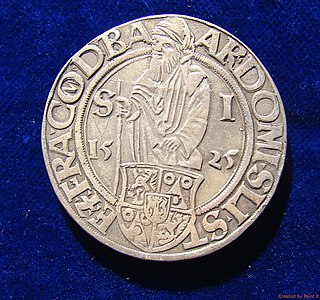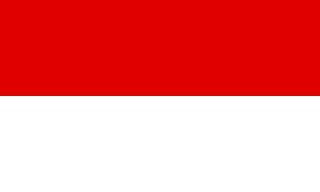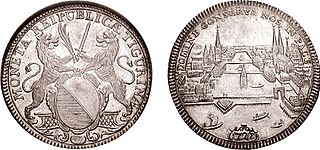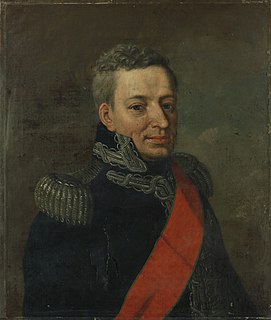The Thaler was the currency of the Landgravate, then Electorate of Hesse-Kassel (or Hesse-Cassel) until 1858. Until 1807, the Thaler was subdivided into 32 Albus, each of 12 Heller . It was worth three quarters of a Conventionsthaler.

The thaler was a silver coin used throughout Europe for almost four hundred years. Its name lives on in the many currencies called dollar and the Samoan tālā, and, until 2007, also in the Slovenian tolar.

The Electorate of Hesse, also known as Hesse-Kassel or Kurhessen, was a state elevated by Napoleon in 1803 from the Landgraviate of Hesse-Kassel. When the Holy Roman Empire was abolished in 1806, the Prince-Elector of Hesse chose to remain an Elector, even though there was no longer an Emperor to elect. In 1807, with the Treaties of Tilsit, the area was annexed to the Kingdom of Westphalia, but in 1814, the Congress of Vienna restored the electorate.
The Heller or
Between 1807 and 1813, the Westphalian Thaler and Westphalian Frank circulated in Hesse-Kassel.
The Thaler was a currency of the Kingdom of Westphalia between 1807 and 1813. From 1808, it circulated alongside the Frank. The Thaler was equal to those of the preceding states, including the Hannovarian Thaler. It was subdivided into 36 Mariengroschen, each of 8 Pfennig.
The Frank was a currency of the Kingdom of Westphalia between 1808 and 1813. It circulated alongside the Thaler, was equal to the French franc, and was subdivided into 100 Centimen.
The Thaler and Heller were reintroduced in 1813, but without the Albus (the last coins denominated in Albus were issued in 1782). Thus, 384 Heller = 1 Thaler. In 1819, the Thaler was set equal to the Prussian Thaler. In 1841, a new currency system was introduced, dividing the Thaler into 30 Silbergroschen , each of 12 Heller.
The Thaler was the currency of Prussia until 1857. From 1750, it was distinct from north German Reichsthaler unit of account in that it contained 1⁄14 of a Cologne mark of silver, rather than 1⁄12, and was minted as a coin. This change was implemented by Johann Philipp Graumann and the system of 14 thaler to the mark was known as the Graumannscher Fuß.
The Silbergroschen was a coin used in Prussia and several other German Confederation states in northern Germany during the 19th century, worth one thirtieth of a Thaler.
The Thaler was replaced at par by the Vereinsthaler.
The Vereinsthaler was the currency of the Electorate of Hesse-Kassel between 1858 and 1873. It replaced the Thaler at par and was replaced by the German Mark at a rate of 1 Vereinsthaler = 3 Mark.










